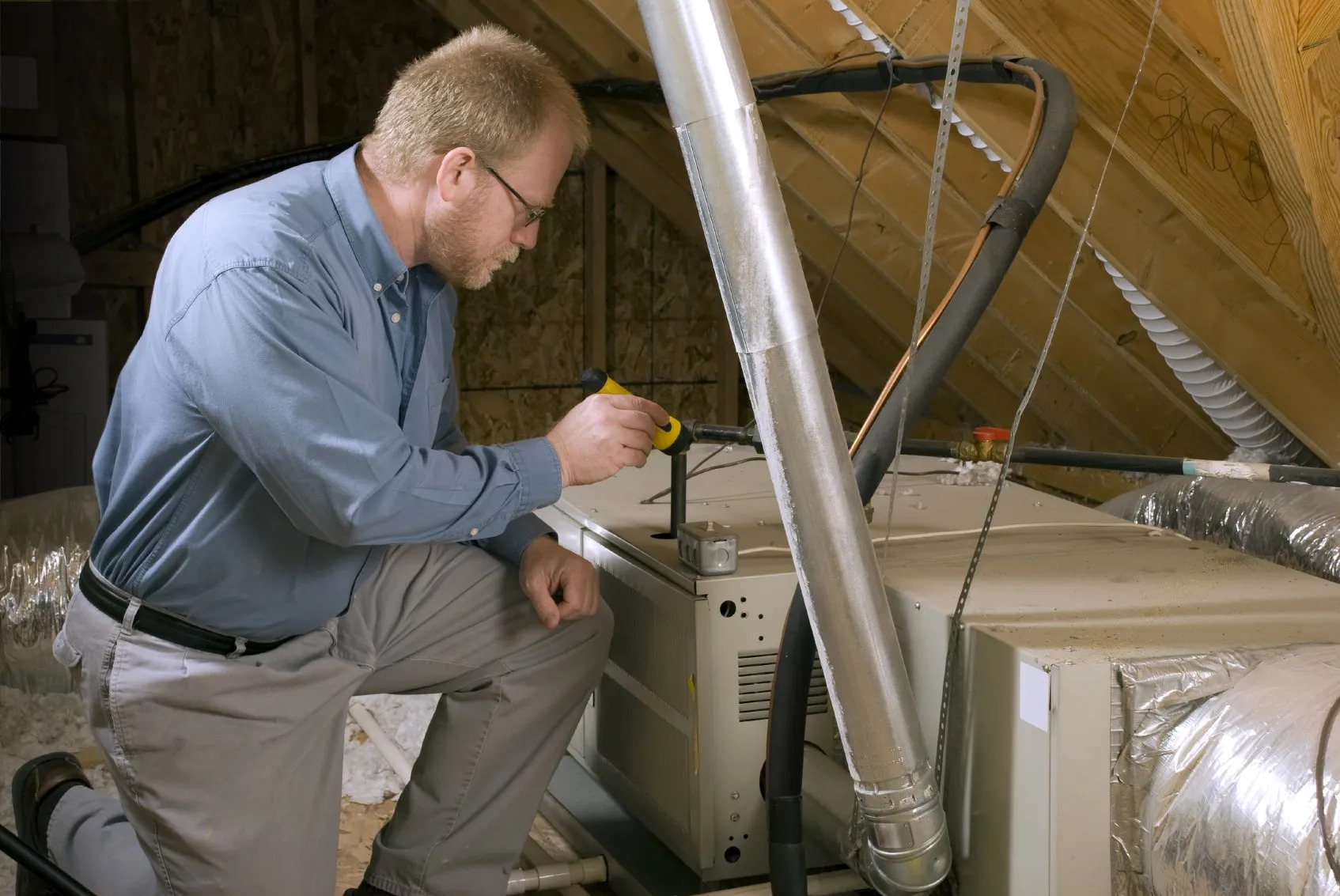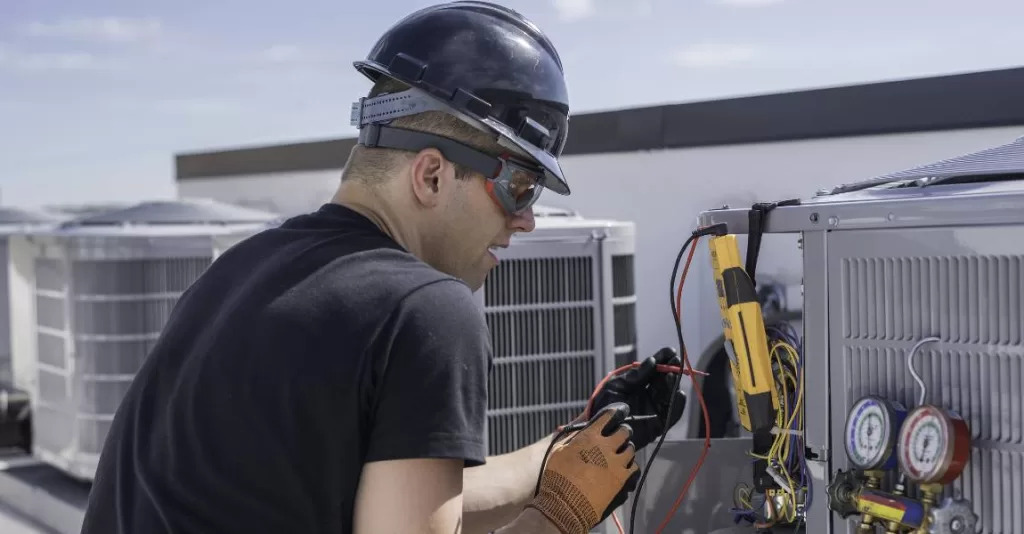The four types of HVAC surges (external power surges, internal surges, lightning surges, and switching surges) can prevent up to 60% of system failures.
Introduction to HVAC Surges
Speaking of indoor climate control, we need to use HVAC systems in both winter and summer, which are one of the most sensitive components in the house and can be seriously affected and damaged by a variety of different power surges. Understanding these power surges is very important to maintain and improve the life and performance of your HVAC equipment.
Power surges from external power sources
Ultraviolet radiation can affect your circuits, or external power surges (due to grid problems or construction sites near your home) can suddenly introduce higher voltages from the power supply. For example, a common power surge from an external power source will increase the voltage from the standard 120 volts to over 169 volts. This sudden rise can overload the electrical components on your HVAC system and cause failure or loss of efficiency. To prevent this, it is necessary to install surge protectors and voltage stabilizers.
Internal power surges
Internal power surges are generated inside a building, usually when operating high-power equipment, such as elevators, powerful motors, or additional HVAC systems. These are temporary spikes, although they can be 10 times the normal operating voltage. For example, when a large motor starts up, it can produce a large surge that affects the HVAC system. These internal surges can be controlled with proper grounding and the installation of surge protectors.
Surges Caused by Lightning
Even an indirect lightning strike to a building can cause huge fluctuations in electrical wiring. A single lightning strike can deliver millions of volts into the system. Lightning strikes can account for 5% of all surges, which can plague your HVAC system. If you live in an area with frequent thunderstorms, it is critical to install lightning rods and ensure that your building's electrical system is properly grounded and that surge protectors are installed.
Switching Surges Within the System
Switching Surges occur when electrical equipment within an HVAC system is turned on or off. While these surges are generally lower in throughput compared to other surges, they can also cause wear and tear over time. An example is the brief startup of a compressor, which can deliver voltages as high as twice the normal operating voltage. While rare, regular maintenance and a properly specified HVAC surge protector designed for your equipment can help you handle these surges.

Power Surges from External Sources
Power surges from outside the building's electrical grid are the most common, and they can be very dangerous to HVAC systems. There are many factors that cause these surges, and they can easily wreak havoc if not handled properly.
Reasons Behind External Surges
Power quality events such as events such as grid failures, construction near a work site, and switching operations by utilities can be the primary cause of external surges. For example, a 6,000-volt voltage spike can occur as a result of a power company switching electrical loads. Construction equipment interfering with underground or overhead power lines can also create sudden and unpredictable surges.
Effects on HVAC Systems
Extra voltage moves through power lines and enters surge protectors through external hydro surges. This can overwork the system's electrical systems, such as circuit boards, compressors, and motors. HVAC units are susceptible to 6,000-volt surges, which can cause equipment to fail immediately or develop reliability issues over time, i.e., frequent failures or reduced capabilities.
Precautions
To protect your HVAC system from external power surges, several precautions should be implemented:
- Surge protection: High-quality surge protectors can be installed at the main distribution board to divert excessive voltage away from the HVAC system. This allows such equipment to withstand voltages of up to 20,000 volts before being completely reconfigured.
- Voltage regulators: They stabilize the incoming power so that a constant and safe voltage level can reach the HVAC system. In some cases, the voltage regulator will maintain 120 volts at a constant level even if the input from the grid itself is not exactly 120 volts.
- Regular inspections: Regular electrical inspections help detect common vulnerabilities in the building's electrical infrastructure that can exacerbate the effects of external power surges. Surge protectors that are inspected twice a year are enough to reduce the likelihood of damage from a surge.
Real-world use case
Now, imagine a commercial building located in a large metropolitan area that has constant problems with power fluctuations due to construction going on nearby. In a year, its HVAC system has several component failures, resulting in expensive repairs and long periods of downtime. The facilities management company installed surge protectors and voltage stabilizers, which reduced HVAC failures by 80% and increased the life expectancy of the equipment.
Internal Electrical Surges
As more and more large equipment comes online, buildings can experience internal surges that cause circuits to exceed their rated electrical load. If not properly handled, these sudden events can interrupt the normal function of the HVAC system and cause extensive damage.
Causes of Internal Surges
A common source of internal surges is the starting and stopping of high-demand appliances. This can include other HVAC components, elevators, refrigeration units, or large motors. When the equipment is turned on, these devices can generate surge currents up to 10 times the rated level. When a large motor starts, the line voltage can rise from 120 volts to 1,200 volts in an instant, so its operation will cause all connected equipment to deform, causing disconnection.
Effects on HVAC Systems
Internal surges can be a significant problem for HVAC systems. Such surges can cause fuses to blow, circuit breakers to trip, or circuit boards to burn out. Continuous surges wear out components over time and can mean warranty issues and more frequent maintenance. As many as 60% of HVAC system failures can be traced back to electrical problems, from internal surges to worn components.
Protective Measures
This is not a simple task, and protecting the internal components of your HVAC system from the threat of a surge requires a combination of the following measures:
- Surge protectors: Installing surge protectors can help absorb and transmit extra voltage around your electrical system. This is a good place to start, especially when placed near appliances that you know can cause damaging surges.
- Effective grounding: Properly grounding your building can help safely introduce excess voltage into the ground. Effective electrical grounding can reduce the likelihood of damage from a surge by 50% or more.
- Routine maintenance: Proper maintenance of your HVAC and other electrical systems can detect potential sources of surges. Maintenance inspections should check wiring, surge protectors, and grounding, among other things.

Lightning-Induced Surges
HVAC systems are among the systems most affected by lightning surges. These surges are caused by lightning strikes and can quickly funnel enough energy into a building's electrical system to damage any number of its HVAC components.
Characteristics of Lightning Surges
Lightning that propagates through power lines can inject millions of volts into an electrical system or directly into a building. A single lightning bolt can generate a voltage surge of about 200 million volts. Even if a direct lightning strike doesn't hit an HVAC system, electromagnetic pulses (and surges generated by wires within a building) can be generated by indirect lightning strikes.
Effects on HVAC Systems
HVAC vs. Lightning Surges These surges can burn out circuit boards, blow fuses, and even turn compressors and other critical components into a pile of scrap metal in the blink of an eye. The extreme heat and energy released by a lightning spike can cause instantaneous and irreparable damage. For example, lightning-related surges are estimated to cost the U.S. more than $1 billion in electrical system damage each year.
Protection Strategies
To protect HVAC systems from surges caused by lightning strikes, several protection methods are employed:
- Lightning Rods: Lightning can be prevented from affecting your home’s electrical system by properly grounding it using lightning rods. Installing lightning rods and taking proper lightning protection measures can reduce damage from a direct strike by about 80%.
- Surge Protection: Surge protectors need to be installed at the main distribution board, these protectors have a high capacity to absorb and eventually convert the energy generated by the surge from a lightning event. These protectors can withstand surges of up to 20,000 volts, greatly neutralizing the hazardous effects.
- Grounding System: Ensure that the building’s electrical system is properly grounded. Grounding also helps to safely dissipate the surge energy into the ground. Structural Protection - Implementing a solid grounding system throughout the building can reduce surge-related damage by 50%.
- Shielding and Bonding: Additional protection can be achieved using shielding and bonding techniques. This includes using metal enclosures to protect sensitive components and ensuring that all parts of the HVAC system are electrically connected to form a continuous ground path.
Lightning Protection Case Study for Commercial HVAC Systems
A commercial location located in a lightning zone was frequently struck by lightning, which resulted in numerous power issues due to frequent damage to HVAC equipment. Installing a comprehensive lightning protection system, including lightning rods, high-capacity surge suppressors, and enhanced grounding, reduced HVAC downtime at the location by 90%. Lightning protection is also a safeguard for HVAC equipment, which has been shown to save a lot of money on repairs and replacements.
Switching Surges within the System
HVAC Switching Surges – An often overlooked condition in HVAC systems that can cause very serious system performance and lifespan impacts. They are caused by the normal function of electrical devices and appliances in the HVAC unit.
Causes of Switching Surges
Switching surges are generated by turning electrical loads on and off. Examples include normal cycling of compressors, motors, and fans. When a compressor starts, it creates a surge where the voltage rises to 2-3 times the normal operating level. Although short-lived, these spikes can create hot spots that stress electrical components.
Effects on HVAC Systems
Switching surges cause cumulative wear and tear on HVAC systems. Continued exposure to these surges can damage insulation, burn out circuit boards, and shorten the life of essential components. One study showed that HVAC systems exposed to repeated switching surges were 25% more likely to fail than those not exposed to surges.
Mitigation Strategies
There are many different ways to reduce the effects of switching surges:
- Soft Starters and Variable Frequency Drives (VFDs): A soft starter or VFD can help by controlling energy consumption during startup, thereby minimizing the extent of the surge. They can reduce the initial surge by up to 50%, and the load is easier on the electrical system.
- Surge suppressors: Specialized surge suppressors made specifically for HVAC systems absorb the excess energy generated by switching surges. You can then add these devices at different strategic points in the system to provide targeted protection.
- Regular maintenance: Regular maintenance of air conditioning units may include inspections to tighten electrical connections. Regular inspections for signs of damage caused by switching surges can detect these signs early, allowing for timely repairs.
Surge protection in industrial HVAC systems
High levels of switching surges cause regular downtime for an industrial facility with multiple high-capacity HVAC units. By integrating VFDs and installing surge suppressors at strategic points in the system, the facility has reduced equipment failures by 70%. This foresight has improved system reliability while also reducing maintenance costs and increasing operational efficiency.
